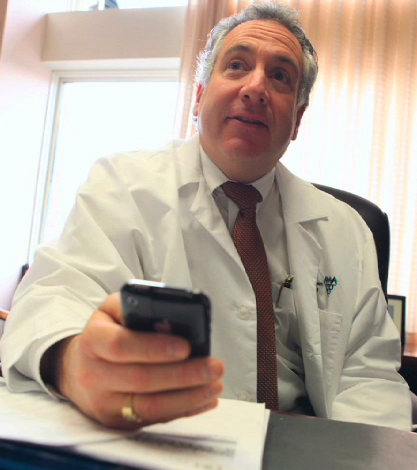 As the number of physicians using smartphones continues to rise, a report in the Washington Post predicts that protocols will soon evolve in how to use the phones with patients -- for now, common sense will have to govern it. The article explores the tension between using a smartphone with a patient to increase patient engagement vs. using a smartphone with a patient in the room and losing one's focus on the patient.
As the number of physicians using smartphones continues to rise, a report in the Washington Post predicts that protocols will soon evolve in how to use the phones with patients -- for now, common sense will have to govern it. The article explores the tension between using a smartphone with a patient to increase patient engagement vs. using a smartphone with a patient in the room and losing one's focus on the patient.
Georgetown University Medical Center family practitioner Steven Schwartz told the Post that his iPhone has become indispensable to his practice. He uses it to share instructional diagrams and videos with patients, to write electronic prescriptions and to check basic information.
"I'm just double-checking on my phone to make sure I don't make a mistake," Schwartz said. (That's "Dr. Schwartz" in case you missed it -- who said doctors never admit they make mistakes?)
The report mostly focuses on Ohio State University's medical school, which pledged last December to give every medical student an iPod Touch. By the fall all students and residents -- 1,400 in total -- will have one of the devices and the school's leaders believe the trend will come to dominate medical education.
"We as medical educators have to teach students to use technology and still stay patient-focused," said Ohio State's vice dean for education Catherine Lucey.
For more on the rise of smartphones among physicians: read the entire article here.


















